The SPARK Framework for Mastering Data Analytics Interviews
What is SPARK?
The SPARK Framework is a step-by-step system designed to prepare you for data analytics interviews — the smart way.
It focuses on foundational understanding, case-based learning, structured answering, real practice, and mindset mastery.
SPARK stands for:
| Letter | Meaning | What It Covers |
|---|---|---|
| S | Structured Learning | Build deep understanding: What, Why, and How of each concept. |
| P | Practical Case Mastery | Learn by solving real-world cases, not just memorizing theory. |
| A | Actionable Answer Practice | Train yourself to answer clearly using frameworks like SPAR/STAR. |
| R | Real Interview Simulations | Practice through mock interviews, feedback loops, and corrections. |
| K | Killer Mindset Training | Build daily micro-practices to control stress and boost confidence. |
How the SPARK Framework Works Step-by-Step
Preparation isn’t about memorizing terms. It’s about mastering thinking, practicing real analytics cases, answering clearly, and performing under pressure.
The SPARK Framework trains you across Structured Learning, Practical Application, Actionable Answering, Real Simulations, and Killer Mindset — exactly what top companies like Amazon, Netflix, and Google test for.
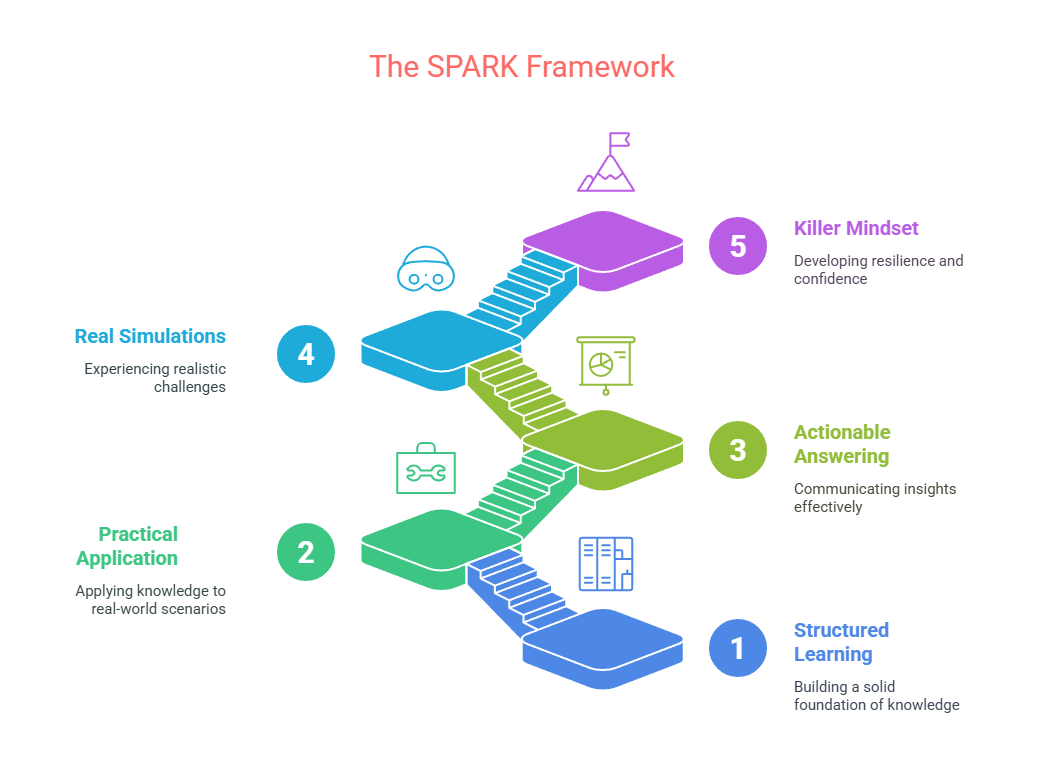
1. Foundational Understanding: "Know What and Why"
Why it matters:
Interviewers often test if you truly understand the concepts, not just memorized definitions.
How to do it:
- Break down topics into What, Why, and How for every concept.
- Keep a simple "Concept-Explanation" notebook.
- Use Feynman Technique: explain it like you’re teaching a 12-year-old.
Example:
What is demand forecasting?
Why is it important for a retail company?
How does it reduce waste and improve profits?
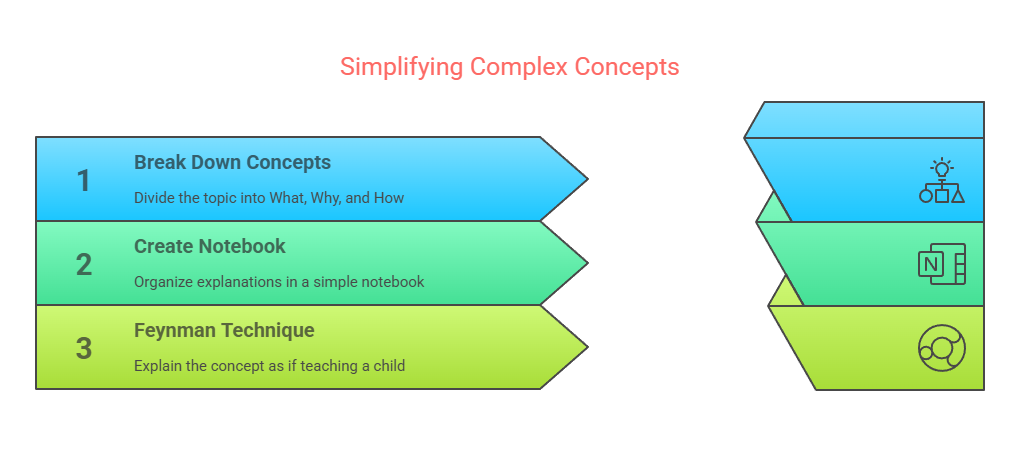
2. Case-Based and Practical Learning
Why it matters:
Modern interviews love scenario-based or case study questions.
How to do it:
- After learning a concept, always ask:
➔ "Where is this used in real life?"
➔ "Can I think of a company or situation where this applies?" - Practice mini case studies regularly.
Example:
"Imagine you work at Amazon. Sales of winter jackets dropped. How would you investigate?"
(Apply demand analysis, customer feedback, competitor research.)
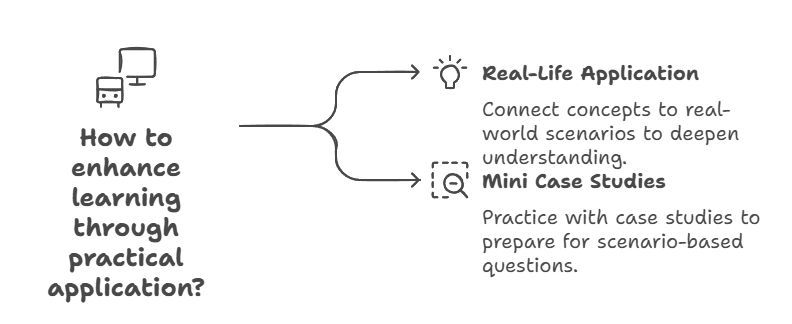
3. Structured Answer Practice (STAR or SPAR Method)
Why it matters:
Interviewers look for clear, logical answers, not random talking.
How to do it:
- Follow SPAR:
- Situation
- Problem
- Action
- Result
- Practice with a buddy or record yourself answering.
Example:
"Tell me about a time you solved a tough problem."
Prepare your 3-4 STAR stories that can fit multiple questions.
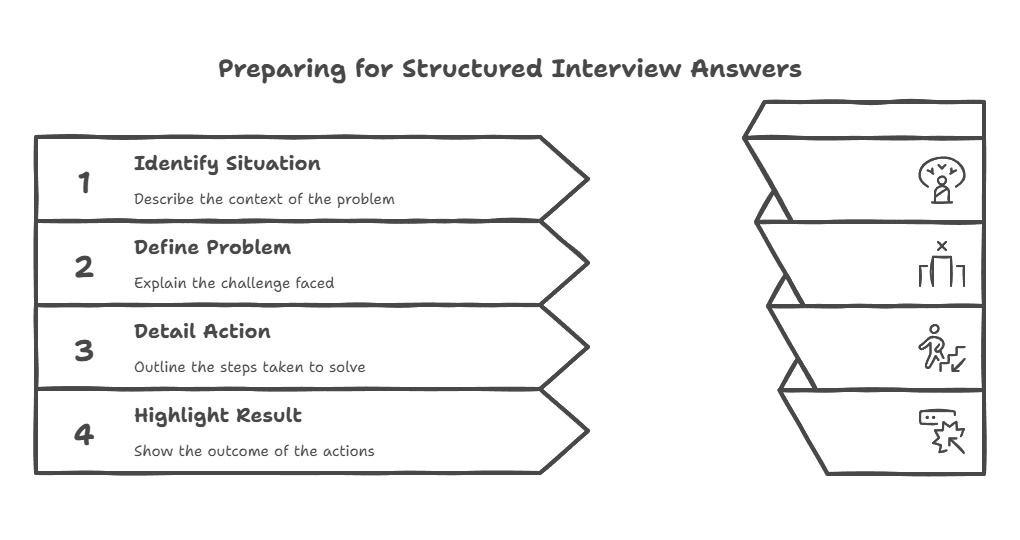
4. Mock Interviews + Feedback Loop
Why it matters:
Real practice reduces nervousness and helps you adapt to live questioning.
How to do it:
- Schedule Regular mock interviews (self-practice, peers, mentors, or AI tools).
- After each mock: ➔ Identify 2 strengths and 2 improvements.
➔ Re-practice the weak areas.
Example:
If you froze during a case question, next practice 3 more cases until it flows naturally.
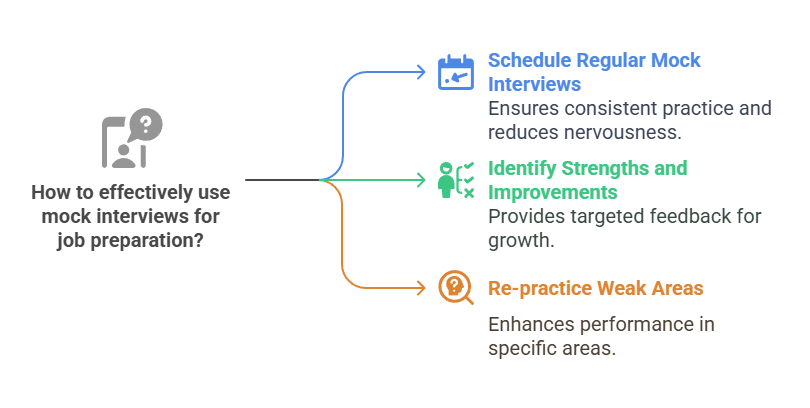
5. Small Daily Improvements
Why it matters:
Cramming a day before interviews is ineffective. Consistent, daily micro-practice builds confidence.
How to do it:
- 1 topic a day: Choose a small topic, revise it, apply it.
- 1 case a week: Solve a new real-world case.
- 1 interview simulation every weekend.
Example:
Monday: Revise "Regression Analysis basics."
Tuesday: Do 3 small problems on forecasting errors (MAPE, MAD).
Wednesday: Analyze how Walmart predicts product demand.
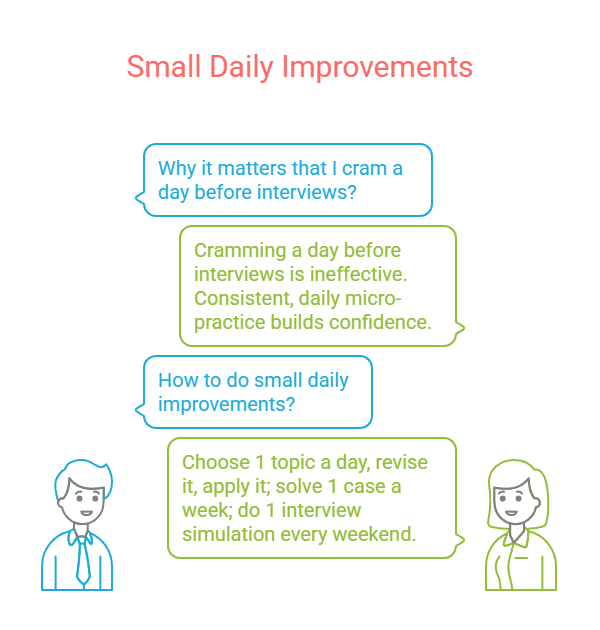
6. Job-Focused Study (Not Just Broad Learning)
Why it matters:
You need to study what interviewers will ask, not everything under the sun.
How to do it:
- Read job descriptions carefully.
- Focus on:
➔ Top 5 skills they mention.
➔ Top 3 tools/software they require.
➔ Top 2 soft skills they value.
Example:
If the job asks for Excel + SQL + Business Problem Solving, your study should prioritize those.
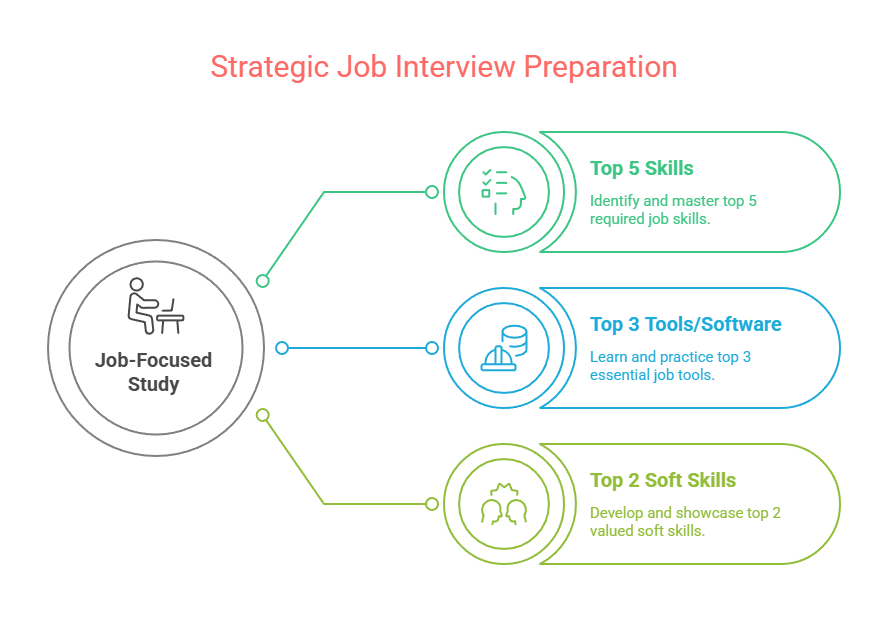
7. Mindset Training (The Secret Sauce!)
Why it matters:
Even top performers stumble because of stress.
How to do it:
- Daily 5-minute deep breathing or mindfulness.
- Before interviews:
➔ Visualize success.
➔ Remind yourself: "I am prepared. I can do this."
The SPARK Framework for Mastering Data Analytics Interviews (with U2xAI Integration)
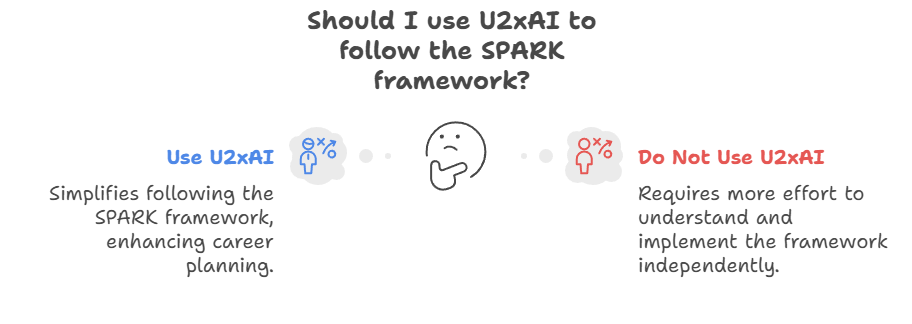
S → Structured Learning
Goal: Build deep understanding by breaking down every concept into What, Why, and How.
How to do it with U2xAI:
- Use U2xAI to generate simple explanations for any analytics concept (like MAPE, SQL JOIN types, Forecast Error).
- Ask U2xAI to simulate the Feynman Technique:
➔ "Explain Forecast Bias to a 12-year-old."
➔ "Summarize in 3 bullet points: What, Why, How."
Example:
Prompt U2xAI:
➔ "Explain 'Data Cleaning' for a new analyst. Include what it is, why it matters, and how to do it."
P → Practical Case Mastery
Goal: Apply concepts to real-world business situations.
How to do it with U2xAI:
- Use U2xAI to generate mini case studies or scenarios based on topics you are studying.
- Ask for real-world application questions:
➔ "Give me a case study on inventory optimization using forecasting."
Example:
Prompt U2xAI:
➔ "Create a mini case where Amazon’s winter jackets sales are dropping, and I need to find why using data analysis."
A → Actionable Answer Practice
Goal: Train to answer clearly and confidently using STAR/SPAR structure.
How to do it with U2xAI:
- Use U2xAI to simulate behavioral interview questions.
- After you answer, use U2xAI to review and improve your answers based on the STAR structure.
Example:
Prompt U2xAI:
➔ "Ask me a behavioral question about solving a tough analytics problem and then evaluate my SPAR structure."
R → Real Interview Simulations
Goal: Practice live interviews and fix weak areas.
How to do it with U2xAI:
- Schedule mock interview simulations using U2xAI.
- Choose specific rounds: SQL test, Business case round, Dashboard interpretation round.
- After mock interviews, ask U2xAI to give you a strengths and improvements report.
Example:
Prompt U2xAI:
➔ "Simulate a 2-round mock interview: Round 1 = SQL questions, Round 2 = Business KPI analysis."
K → Killer Mindset Training
Goal: Build mental resilience to stay calm under interview pressure.
How to do it with U2xAI:
- Use U2xAI to guide you through 5-minute mindfulness routines before practice sessions.
- Ask U2xAI for positive visualization scripts.
- Build a confidence-boosting routine before mock or real interviews.
Example:
Prompt U2xAI:
➔ "Create a 2-minute positive visualization script for my interview morning."
➔ "Generate 3 affirmations for staying calm and focused."











